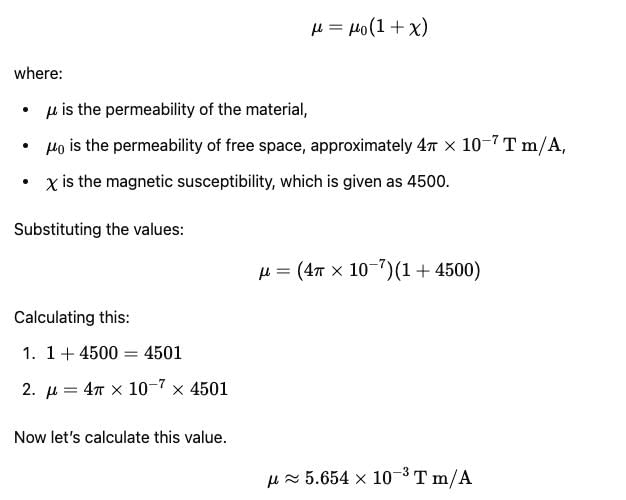Test: Magnetic Properties - NEET MCQ
10 Questions MCQ Test Physics Class 12 - Test: Magnetic Properties
The magnetic induction left behind in the sample after the magnetizing field has been removed is called
| 1 Crore+ students have signed up on EduRev. Have you? Download the App |
The ferromagnetic materials can be magnetised easily because
What kinds of materials are used for coating magnetic tapes?
A particle of charge q and mass m moves in a circular orbit of radius r with angular speed. The ratio of the magnitude of its magnetic moment to that of its angular momentum depends on
A wire of length L m carrying current i A is bent in the form of a circle. The magnitude of magnetic moment is
If the susceptibility of a metal at saturation is 4500, then what is the permeability of this metal at saturation?
The maximum value of permeability of a metal (77% Ni , 16% Fe , 5% Cu , 2% Cr) is 0.164 T-m/A. What will be the maximum relative permeability and susceptibility?
The units of magnetic pole strength and magnetic dipole moment of a bar magnet are
|
97 videos|370 docs|104 tests
|


















